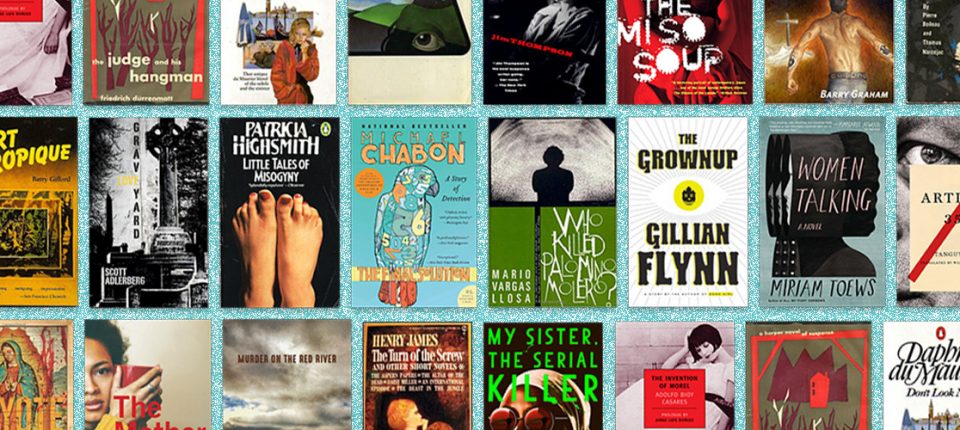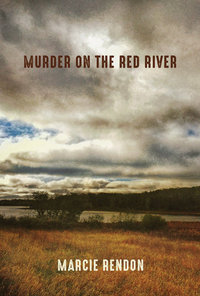In an age of distraction, it’s hard to find time to read an entire book at one go, but the depth of concentration achieved by reading a single book at a stretch is well worth carving out the time—even more so if that time is stolen, an illicit moment of enjoyment before returning to earthly travails; a glorious place to remember that reading is for pleasure but also for compulsion, as we race to get to the last page.
But how does one find out about books both short enough to plow through in a few hours, and compelling enough to make that journey one of rewards? Through the internet, of course! Last year, we recommended 25 classic crime novels you can finish in an afternoon, and that’s why this year, we’re once again wading into the fray to help you find just the right book to start and finish in an afternoon.
There are some trends that emerged from assembling this list. First, forget resolution—there’s no time for that in 200 pages or less. Instead, the authors below create as much doubt as possible, letting the reader’s imagination fill in the blank spaces necessitated by the form. Second, the twists in short crime novels are based more in human nature than in plot points. As in short stories, a character doing the unexpected is enough of a reversal; no need for a left turn in events, all we need for a reversal is a new layer of understanding providing insight into hitherto obscure motivation. And, because these are crime books, the surprising part is just how bad human behavior can be. The biggest surprise for the reader, however, might be just how delightful all that bad behavior can be.

Oyinkan Braithwaite, My Sister the Serial Killer
You can easily read this one in a single afternoon; preferably in public, giggling loudly, as everyone around begins to suspect that you, not your sister, are the real serial killer. Braithwaite’s debut is further proof that Lagos is a hot spot for creative takes on the crime genre. Plus, this book doubles a perfect present for all the women in your life (and, perhaps, a few of the men).

Masako Togawa, The Master Key
Masako Togawa’s works have been recently reissued by Pushkin Press, and we can’t thank them enough! In addition to writing mysteries, Togawa was also a nightclub singer, actress, and queer midcentury icon. The Master Key, Togawa’s story of the denizens of Tokyo women’s hotel, reads like The Westing Game on acid. Follow several women as they investigate the mysterious goings-on at the high-rise boarding house. No one is quite who they seem….

Miriam Toews, Women Talking
Toews drew from a horrifying real-life story when imagining the crimes in her book. Women Talking is set in Mennonite community plagued by mass rape. When the perpetrators are discovered, and face little consequence, the women of the community gather to choose between three heady options: flee, stay, or fight.
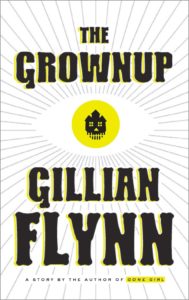
Gillian Flynn, The Grown-Up
This one got stolen from the bookstore I used to work at A LOT, and if that’s not a marker of quality, then what is? Those who appreciate their stories short and wicked should immediately devour Flynn’s Edgar-Award-winning homage to the classic ghost story.
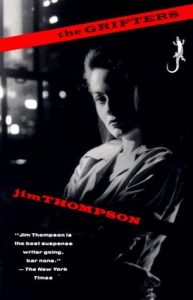
Jim Thompson, The Grifters
While we love the 1990 film adaptation of this one more than words can describe—the Donald Westlake-penned screenplay does justice to the book, and Angelika Huston is everything—the original novel is still a tough-as-nails classic that you can finish in an afternoon. A cautionary note: while this book can be read quickly, it will leave you far too emotionally devastated to go about any of your ordinary tasks for at least an hour afterward.
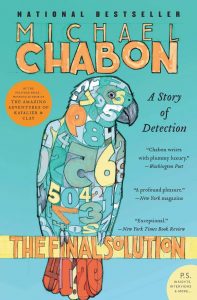
Michael Chabon, The Final Solution
I’m a sucker for crime books about once-great figures, reduced by age and infirmity, in pursuit of one last case before they call it on life. I’m also a believer in crime fiction’s ability to approach great suffering obliquely; a small absence can amplify a larger one, and there’s no more haunting an absence than that which is created by murder. In Chabon’s The Final Solution, an aging Sherlock meets a Jewish refugee child who has lost the ability to speak. The child has a parrot, and the parrot spouts numbers, and these numbers…well, you’ll have to read the book.
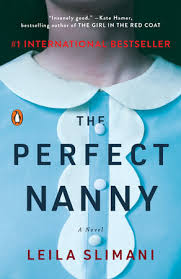
Leila Slimani, The Perfect Nanny
It’s not a spoiler to say that this book is about a nanny who kills her two young charges—we learn that in the first two pages. Why she kills them is another matter entirely. Slimani’s psychological alternates between the perspective of a young, overworked mother whose sanity is restored by the perfect nanny, and the nanny herself, oft-compared to a porcelain doll, whose seeming perfection hides a deep anger. Class, race, and gender intersect on every page, for a book that will stick in your mind long after you finish the last page.
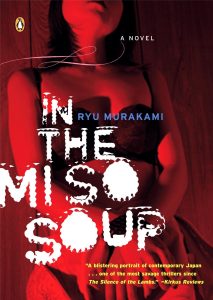
Ryu Murakami, In the Miso Soup
I love everything Ryu Murakami writes, but this one is probably the closest he’s ever come to a straightforward crime novel, and it’s still really weird. In the Miso Soup is told from the perspective of a tour guide who earns his dollars helping foreigners get their kicks in Tokyo’s red light district. When he’s hired by a dough-faced creeper who pretends to be a bit too ordinary, the tour guide knows something’s off—could his client be the serial killer plaguing the district?
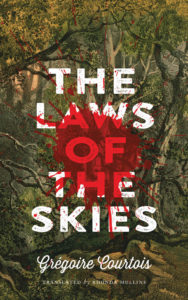
Grégoire Courtois, The Laws of the Skies
In this ode to fairy tales and Lord of the Flies, a group of schoolchildren on a nature excursion are stranded in the forest—and one of them may just be a murderous psychopath. We probably don’t need any further reminders that children are terrifying and amoral and may kill either us or each other at any point in time…But why not read about them anyway?
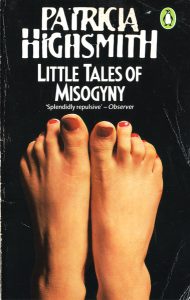
Patricia Highsmith, Little Tales of Misogyny
While reception was mixed when this story collection first came out in the late 1980s, I’m convinced that’s only because the predominantly male reviewers just didn’t get it. You’ve got to have both a twisted sense of humor and a basic understanding of how the patriarchy functions in order to appreciate the brilliance of these stories. Each tale plays havoc with a different trope of feminine cunning or wiles, and each ends in a gruesome murder. In one story, a woman feeds her husband to death after discovering he has heart trouble; in another, a gangster moll goes from man to man until she’s tossed into a river for her troubles; in one of my favorites, a jolly cavewoman is the good time girl of her prehistoric community, but only because she’s been hit on the head with a club so many times. I reread this collection every couple of years. Take that how you will.

Tanguy Viel, Article 353
This book is so. darn. French. Like, Gerard Depardieu was narrating it in my mind the whole way through. Article 353 is told as a confessional—a man accused of murder pleads his case to a sympathetic judge increasingly convinced that the victim deserved to die. The accused is a former shipyard worker, conned into investing all his money into a never-to-be-built seaside resort, and the victim is an insidious developer from the South of France who’s empty promises have shattered a town already reeling from deindustrialization.
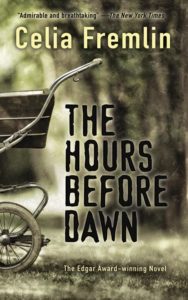
Celia Fremlin, The Hours Before Dawn
In the early 1960s, Celia Fremlin carved out a space writing tightly wound psychological thrillers exploring the strictures of women’s lives, and especially the pressures of motherhood. I have a theory that fiction about women’s lives becomes most creative at the very moments where we find ourselves to be most stilted (or, alternatively, at those moments we are actively trying to break free of these restraints), and you can’t get a better example of this phenomena than Celia Fremlin. The Hours Before Dawn, winner of the 1960 Edgar Award for Best Novel, is narrated by a young mother who believes she’s going insane listening to her baby’s unceasing wails. Her fears, however, may be more grounded in reality than she would prefer to imagine—especially the sinister intents of her new lodger.

Gabino Iglesias, Coyote Songs
Gabino Iglesias is helping create and define a new subgenre of Barrio noir, telling stories of the Southwestern demi-monde, from migrants, to gangsters, to narcos (you can read more about the new wave of Latinx noir here). Coyote Songs is Gabino’s fourth book, but any of his oeuvre would please the fan of hardboiled fiction; Iglesias always underscores the basic humanity of his characters even as he subjects them to indescribable violence, and if that’s not noir, what is?

Barry Graham, The Wrong Thing
This one was part of my favorite publishing imprint ever—R.I.P. Switchblade. What is this Switchblade, you might ask? Switchblade was an imprint of PM Press that, for approximately five years, published some of the most brutal and heart-rending noir ever written, with an emphasis on socially engaged crime fiction that went straight to my little commie heart. Don’t worry, the books published by Switchblade are still in print—there just won’t be any new books from the imprint. But what about this particular book? The Wrong Thing begins as a young man is walking home from prison. He’s offered a ride, and refuses, setting the tone for his particular brand of rebellious independence.
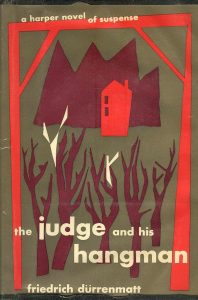
Friedrich Dürrenmatt, The Judge and His Hangman
Originally published in Germany in 1950 by Swedish novelist and playwright Friedrich Dürrenmatt, this meta-detective novel made a big splash with its 1954 English translation, bringing together European existentialism and the American hardboiled tradition years before Camus published The Stranger. Dürrenmatt was fascinated by the merging of philosophy and form, and you can read more about his unique approach to detective writing here.
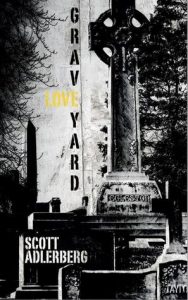
Scott Adlerberg, Graveyard Love
Scott Adlerberg is a film junkie, so expect this tight little novel to conjure cinematic dreams. A loner who lives with his mother becomes obsessed with a red-headed woman who is a frequent visitor to the graveyard across the street. During a cold winter in upstate in New York, the narrator, his mother, and the mysterious woman grow inexorably intertwined, each pursuing a separate, but equally dangerous, obsession.

Mario Vargas Llosa, Who Killed Palomino Molero?
Featuring Vargas Llosa’s signature blend of humor, horror, and realism, Who Killed Palomino Molero? begins with the discovery of a young airman’s brutally murdered body. When the two cops sent to investigate the crime are unable to locate a squad car and have to flag down a taxi instead, you get a sense of the corruption and indifference pervading 1950s Peru. Like any good writer using the 1950s as a backdrop, Vargas Llosa uses the extremes of the era to make larger points about prejudice, conformity, and of course, human nature itself.

Daphne du Maurier, Don’t Look Now
Du Maurier’s novella Don’t Look Now is a masterpiece in restraint. A married couple is vacationing in Venice, attempting to recover from the sudden death of their young daughter. They encounter two middle-aged sisters who claim to see the spirit of their daughter, while the couple’s older child has meanwhile taken ill at boarding school back in England. Are the sisters psychics or frauds? Is their daughter gone forever or horribly returned? This brilliant story perfectly complements Nicholas Roeg’s moody adaptation of the story, filmed in a befogged Venice that may soon enough vanish under the waves…

Boileau-Narcejac, Vertigo
Before the Hitchcock masterpiece, Vertigo won acclaim as one of many hits from the successful writing duo Pierre Boileau and Thomas Narcejac, who together shaped the landscape of mid-century crime fiction under their pen name Boileau-Narcejac. Vertigo has basically the same plot as the Hitchcock film, although imbued with a grimmer, more pessimistic vision. Truffaut thought that Vertigo, originally published under the title D’entre les morts, was crafted especially for Hitchcock, and while there’s no shame in having seen the film without having read the book, the book is also quite good.
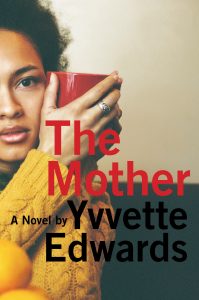
Yvette Edwards, The Mother
Like many books I recommend on the site, this one is not so much a crime novel, as it is a careful and considered exploration of the meaning of crime in society. When a mother loses her son to violence at the hands of another teenager, she attends the trial determined to seek punishment, but finds herself sympathizing with the mother of her son’s killers, and eventually, finding space for nuance in her attitude towards the killer himself.

Muriel Spark, The Driver’s Seat
In this taut little thriller by one of the queens of mid-century British literature, we’re introduced to Lise, a spinster accountant living a quiet life in Denmark, who will soon be murdered. The question is, why? The Driver’s Seat was described as a “metaphysical shocker” upon its publication in 1970, and Spark’s literary talents are on full display in one of the most quietly chilling psychological thrillers of the 20th century.
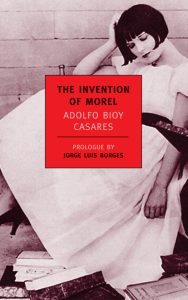
Adolfo Bioy Casares, The Invention of Morel
In this moody snapshot of a novel from Argentinian Renaissance Man Bioy Casares, a fugitive hiding out on a deserted island finds his philosophical musings interrupted when tourists come to visit. This is the detective novel deconstructed, with little resolution as to who any of the characters are, what they are doing there, and why, yet we’re compelled to finish and obsessed with that which is obscured, for a surprisingly satisfying read. The fact that the fugitive is meant to be from Venezuela also provides an added layer of poignancy, given the nation’s ongoing troubles.
Marcie Rendon, Murder on the Red River
The Red River of the title refers to the divide between Minnesota and North Dakota, where series heroine Cash makes her first appearance, teaming up with her father figure and mentor Sheriff Wheaton, who once rescued Cash from a life being abused in foster homes after her forcible removal from her family. Rendon, a member of the White Earth Anishinabe Nation, writes fiercely and passionately about the Native American experience, and in Cash, has crafted a scrappy lead that we’d like to see take on many more cases.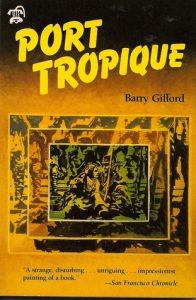
Barry Gifford, Port Tropique
Barry Gifford is best known (to the crime community, anyway) as the editor of the famed Black Lizard series of reissued pulp classics, helping keep those stories circulating on high-quality paper that wouldn’t disintegrate like the original editions. Port Tropique, a tight, squalid little masterpiece of ne’er-do-wells drinking themselves under the table in an unnamed Central American country as revolution rages around them, would have fit right in with Gifford’s rescued classics, as well as holding its own against Graham Greene or John le Carré.
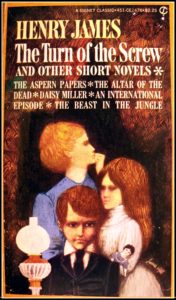
Henry James, The Turn of the Screw
Henry James’ eerie tale of a governess and her two charges is always a gripping read. Isolated on a remote estate, with only two small children to keep her company, the governess becomes convinced the house is haunted. Is she mad? Are the ghosts real? Are the children just messing with her? And how far will she go to protect her charges from their ghostly companions?

